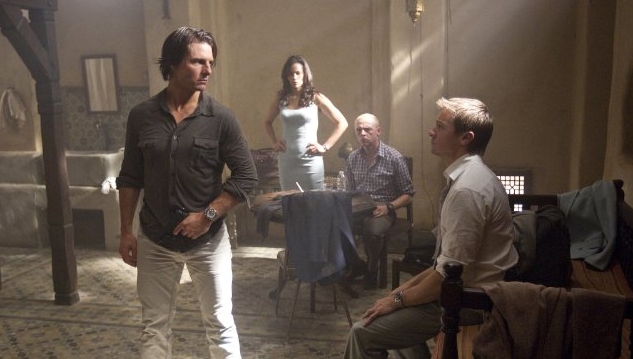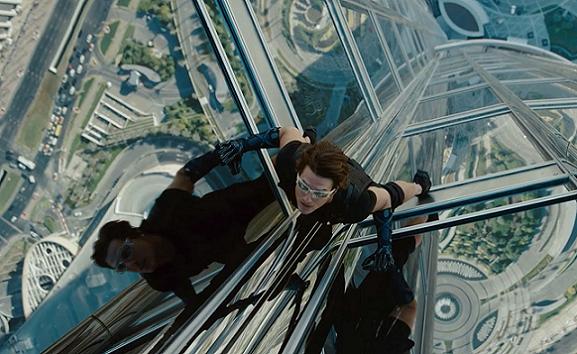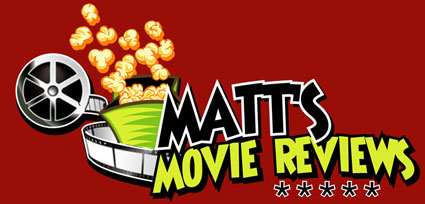When future generations look back on the history of feature film animation, Brad Bird will be seen as a vital part of its development.
Labelled by some as “the modern day Walt Disney”, Bird has delivered three staples in the animation medium with The Iron Giant, The Incredibles and Ratatouille while also becoming an important creative force in top grade animation house Pixar Studios.
Now Bird is stepping out of his comfort zone and taking on live action, and what better way to make a splash then diving head first into a large Hollywood production like the Mission: Impossible franchise?
Mission: Impossible – Ghost Protocol features Bird at his most ambitious. Starring Tom Cruise as super spy Ethan Hunt, …Ghost Protocol ups the stakes in the world of good v evil action cinema with crazier stunts, tighter thrills and bigger locations as Ethan and a new group of agents (Jeremy Renner, Paula Patton and Simon Pegg) try to stop a nuclear extremist (Mikael Nyqvist) from dropping a nuke on American soil.
With Cruise also producing the film alongside J.J. Abrams (who many felt rejuvenated the franchise with Mission: Impossible III), Bird found himself in a fortunate situation where he was encouraged to explore and bring new ideas to a successful franchise.
“Once I knew that it was Tom and JJ’s franchise you relax, because you know that they just want to make a great time at the movies” said Bird. “There attitude is very much like my attitude. I think the main thing is that anytime you are doing a sequel with a franchise, you are dealing with audience expectations and instead of taking that as a burden – which it can feel like sometimes – if you take it as a tool which you can actually use…in other words, if the audience is expecting you to go left because in every film at this point you went left, you gotta go right. Or maybe even up. What would happen if you suddenly dove through the floor?”
One of those “dove through the floor” moments occurs half way through the film in a thrilling scene shot at Dubai’s famed Burg Khalifa tower (officially recognised as the tallest in the world), where Cruise lives up to his action man daredevil reputation and scales the tower at 150 stories high…without the use of a stunt double.
“That sequence was in the film when I came on, and Tom was a producer so there was no way that he wasn’t going to do that, you know?” said Bird. “I’ve been asked several times about ‘How did you find an insurance company willing to do that?’ and the answer is simple: Tom Cruise is the producer and any insurance company who wanted the job had to find a way to live with the idea that he is going to be swinging around that building (laughs).”
 |
"The story is about the team more so than it’s about the MacGuffin or the mission specifically. It’s more about a bunch of people who don’t know each other that well kind of being forced to trust each other. That was interesting to me." - Brad Bird |
Jumping from the land of pixels to the land of the living was always going to be a challenge for Bird, but directing live action performance is not the stretch many believe it to be.
“You direct when you record the voices in animation and you direct the animator” said Bird. “Much of the world and particularly ill-informed actors, believe that the animation process is some technical exercise that doesn’t involve the kind of decisions that actors make, which couldn’t be further from the truth.”
“The best animators are actors and when you ask them about what they do, they speak in the terms that actors speak. They talk about what’s the motivation finding somebody’s physicality…how they walk, how they sit” said Bird. “I think the main difference is spontaneity. You can imitate spontaneity in animation but it’s very hard to achieve it in anything beyond the soundtrack, because it’s just too time consuming in terms of the resources. But in live action it’s all about creating an atmosphere on the set where people feel free to invent and great things can happen out of the blue, you know? You can be going on for 3 or 4 takes and its dead and then somebody gets one little idea and suddenly it comes alive and that’s something that works great there. You realise there are other places in the movie where it can also work. It’s a very alive thing.”
Bird’s animation background at Pixar proved to be a vital training ground for the type of large scoped, action filmmaking which the Mission: Impossible franchise is known for.
“The great thing about Pixar is that it’s filmmaker driven” sad Bird. “The people that run the company are filmmakers. They are not executives who are coming at it from a business school perspective. They’re coming at it from the point of view of loving the medium and loving what it can do.”
“Within the animation world I am known as a pre-planner to end all pre-planners, you know? We had very elaborate story reels in The Incredibles and it was because I had a movie that was several times bigger than anything Pixar had done. But I didn’t have more money. So when it came time to doing (Mission: Impossible) where we again had a really big canvas but a tight schedule, I had already done that before so it’s a lot of wear and tear but I’m already pre-wired to make that exchange. I’ll lose some flexibility if I can do twice as big as a thing.”
And twice as big is exactly what …Ghost Protocol is with Bird delivering the biggest Mission: Impossible movie thus far in terms of its physicality, made even more so with 20 min of the film shot with IMAX cameras. Once again, Birds background as a thorough animation filmmaker came in handy.
“I think where it helped was that we had physically the biggest Mission: Impossible film but we did not have the biggest budget or the longest schedule” said Bird. “So we had to be really on our toes because if we spent too much money on one thing, we wouldn’t have enough money for the other.”
“We had this laundry list of things we wanted to get on screen and we had to be really careful to get every dime we had on the screen, so that’s where the animation training helped out a lot because I only really got to pre-visualise about two and a half sequences in the movie, and the rest I had to kind of come up with on the fly and the fact that animation is all about pre-visualisation helps me out a lot, because those muscles I had already exercised.”
 |
"Tom Cruise is the producer and any insurance company who wanted the job had to find a way to live with the idea that he is going to be swinging around that building." - Brad Bird |
Bird is not the only big name that is new to the Mission: Impossible franchise with prolific Oscar nominated actor Jeremy Renner playing number two to Cruise’s headline act, a casting move which led to heavy speculation that Renner was groomed to take over the Mission: Impossible series down the road. But according to Bird Mission: Impossible will remain Cruise’s franchise for some time to come.
“No, that was just sort of an internet thing” said Renner. “I don’t think he’s one way or the other in the way things are being planned. I think everyone in this film is good enough that anyone of them could take a Mission: Impossible film and that’s the way Tom wanted it.”
“But this is very much an Ethan Hunt film” said Bird. “That said, one of the things that attracted me to my being involved with the film was the idea that the story line really involved…in every other Mission: Impossible film Ethan picks the team, and in this film the team is sort of thrust upon him, and then the team is isolated. So the story is about the team more so than it’s about the MacGuffin or the mission specifically. It’s more about a bunch of people who don’t know each other that well kind of being forced to trust each other. That was interesting to me.”
Regardless of who is behind the camera or playing support Mission: Impossible will always be the Tom Cruise show, and with the world’s biggest movie star working at full capacity audiences are sure to be reminded that when it comes to big scale action thrills, only a few can match Cruise when he is in his element.
Yet Cruise is also known to be an equally intense personality off the screen as well, yet for Bird it was a working relationship which provided many rewards.
“It’s a challenge because he’s very intense, he does his homework, he shows up on time and knows his lines and expects everyone else to be, you know, this is pro-ball and we came to play” said Bird. “That bothers maybe somebody…I don’t know who it would bother. But it’s the kind of stuff that I love, because that’s the way I approach it so we got along great and he could not be more supportive of me doing things the way I wanted to do them.”
“In fact, he was very good about helping me with some live action ways. For instance, because I had worked in animation and I was used to knowing ‘Ok. I’m gonna be on this shot, and I’m gonna follow it to this point, and then we cut, and then I’ll go put the camera here and I will follow this over here, and da,da,da…’ So when it got to that point in the scene, I would often times go ‘Cut!’ and he kind of came up to me and went ‘You might want to keep the camera rolling a little longer, because you never know…’ If an actor is in a moment and something is happening, you don’t want to say cut just because that is at the point where you want to change the camera angle.”
“If it’s happening, you want to let it play. Because film is the cheapest part of the process. The expensive part is getting everybody there, all of the lights, all the machines, all the per diem, all the hotels and make up…that’s the expensive part. The film is cheap. So I very quickly learnt to not call cut so quickly, and Tom was very generous with sharing his knowledge of the process.”
|
